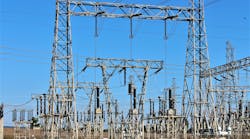Electric, gas, and water utilities have long used public cellular networks as one means of linking various field devices to the utility’s central operations systems. Until recently, however, the use of such networks in the utility sector has been limited in scope, primarily due to restrictive pricing and perceived technical limitations. Yet, a confluence of factors is leading a major shift in how utilities view public cellular options as they roll out smart grid infrastructure projects.
According to a recent report from Pike Research, global annual service revenue from public cellular network nodes in smart grid applications will surpass $1 billion by 2020, representing a 27% compound annual growth rate (CAGR) from 2011 to 2020. A cumulative total of 73 million cellular M2M communication nodes will be shipped for use in smart grid applications during the period from 2011 through 2020, the cleantech market intelligence firm finds.
“Carriers and integrators have awakened to the unique opportunity of the smart grid. It is no longer just another general vertical market application,” says vice president Bob Gohn. “With new pricing and service offerings specifically tailored for the large number of endpoints but relatively low aggregate data volume typical of grid applications, public cellular is becoming a real competitor to private utility-owned networks. The end result is a significant and growing monthly stream of revenue to the carrier, without taxing the carrier’s network resources.”
Largely thanks to smart grid deployments driven by the European Union’s much-publicized 20-20-20 mandate, Europe is the leading region for public cellular node unit shipments and revenue through the remainder of the decade. Europe will also likely lead the market in annual service revenue, due largely to the sheer volume of aggregate data being sent by the region’s smart meters, as well as the smaller (yet steadily growing) number of nodes being used for applications such as distribution automation and substation automation.

